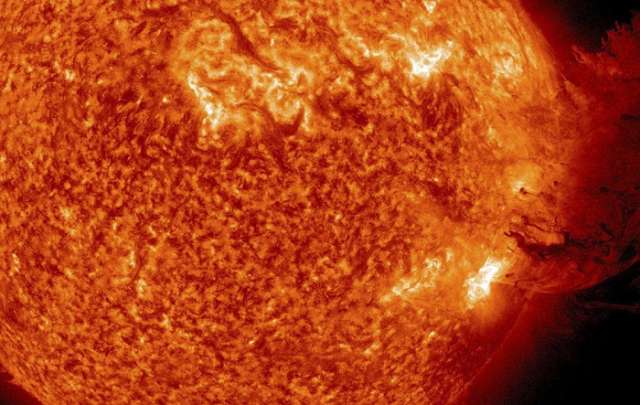Solar storms could be more powerful than previously assumed

The study follows the work of researchers in 2012, when they found traces of a rapid increase of radioactive carbon in tree rings from those time periods. The 774/775 event corresponded with a text in an ancient Anglo-Saxon Chronicle, which referred to a “red crucifix” appearing in the heavens after a sunset.
However, the causes for the increases in radioactive carbon were previously debated, with some believing the red crucifix was caused by a supernova, and others saying it was because a giant comet hit the sun.
The study`s authors are now certain that both incidents were indeed solar storms, after finding evidence of beryllium – a radioactive element associated with solar storms – in ice core samples.
“We have now found corresponding increases for exactly the same periods in ice cores. With these new results it is possible to rule out all other suggested explanations, and thereby confirm extreme solar storms as the cause of these mysterious radiocarbon increases," Raimund Muscheler, a professor of Quaternary Sciences, said in a press release.
The analysis also determined the two solar storms were at least 10 times stronger than the most intense storms to have been recorded on Earth. The largest solar flare previously measured was the 1859 Carrington Event, which saw the occurrence of the largest recorded geomagnetic storm.
Solar storms are described by NASA as “a variety of eruptions of mass and energy from the solar surface,” with the common components including “flares, prominences, sunspots, and coronal mass ejections.” The storms involve sudden releases of stored magnetic energy, which "accelerates the hot gases near the surface or in the corona of the sun."
When the associated particles make their way to Earth and collide with the planet`s magnetic field, it can result in a beautiful aurora, but it can also wreak havoc on technologies.
According to the researchers, if an event of the magnitude that occurred in the two previous storms occurred today, it would disrupt satellite-based technology and means of communication. They urged for further reassessment of the risks.
It was estimated in 2013 that a modern-day Carrington Event could cause power outages lasting five months or longer, and come at a cost of US$0.6-2.6 trillion. Solar storms previously caused major power outages in October 2003 in Sweden and in March 1989 in Canada.















































